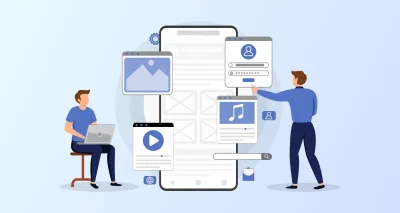The mobile app development process can seem daunting, but breaking it down into manageable steps can make it more approachable. Here’s a comprehensive guide to help you navigate each phase of developing a successful mobile app.
1. Ideation and Research
Start by defining the core idea of your app. What problem does it solve? Who is the target audience? Conduct thorough market research to identify competitors and potential user needs. This foundational step ensures that your app has a clear purpose and stands out in the crowded app marketplace.
2. Planning and Strategy
Once your idea is solidified, develop a detailed project plan. Outline the app’s features, functionalities, and overall scope. Decide on the technology stack, such as native (iOS or Android) or cross-platform development. This stage also involves setting a budget, timeline, and defining key milestones. A well-structured plan helps in managing resources and expectations effectively.
3. Designing the App
The design phase focuses on creating the visual and functional aspects of your app. Start with wireframes to sketch the basic layout and user flow. Progress to high-fidelity mock-ups and interactive prototypes that detail the user interface (UI) and user experience (UX). Good design is critical for user engagement, so aim for an intuitive and attractive interface.
4. Development
With designs in hand, the development phase begins. This involves coding the app’s backend (server-side logic, database management) and frontend (the user interface). Choose between native development for platform-specific apps or cross-platform development for broader reach. Ensure that the development process includes regular testing to catch and fix issues early.
5. Testing
Testing is crucial to ensure that your app functions correctly across various devices and operating systems. Perform different types of testing, including functional, usability, and performance tests. This stage helps identify bugs and ensures that the app provides a seamless user experience. Rigorous testing is essential for delivering a polished final product.
6. Launch
After thorough testing, prepare for the app’s launch. Submit your app to app stores such as Google Play and the Apple App Store. Each platform has specific guidelines and review processes, so ensure your app meets these requirements. Plan a launch strategy to promote your app and attract users, leveraging marketing channels and social media.
7. Post-Launch and Maintenance
Once the app is live, continuous monitoring and maintenance are vital. Track user feedback and app performance to address any issues promptly. Regular updates can enhance functionality, fix bugs, and introduce new features based on user needs and technological advancements. Ongoing support ensures that your app remains relevant and competitive.
Following these steps will help streamline the mobile app development process and increase the likelihood of creating a successful and impactful app.





Comments